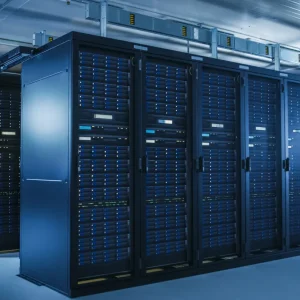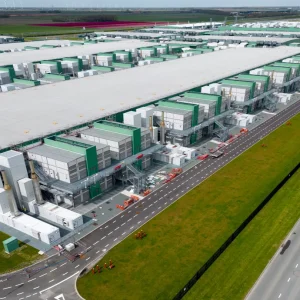
The world is no longer simple in the technology field. Fact. There are cars driving data into the cloud constantly, patients’ data being collected all around the world all the time, finance services escalating their data sets, the list continues.
In this complex world, data centres are key. Also a fact. After all, they are the backbone of the future.
So how does that future look like for the data centre industry itself? It looks much more bespoke to customers and technology users’ needs and a networked data centre strategy is the way to win over the growing challenges of a connected society.
That is according to William Barney, CEO of Global Cloud Exchange, who at Datacloud Europe 2016, in Monaco, told an audience of hundreds that "IoT and M2M will require new network and optimisation views".
Back to basics, a networked data centre, or NDC, provides more data centre services than a normal facility by making functionality available on a network.
According to Gartner, an NDC employs networking technology to treat multiple data centres and the network as a single system to efficiently access and process applications.
The definition itself carries with it another big industry shake-up which is taking place right now: the appearance of large data centre networks, including not only the usual big colocation facilities but also the latest industry hype, edge data centres and even regional hubs.
All of which need to work and communicate between themselves, circling back to the idea of a networked data centre architecture.
As this mesh widens, NDC business maps are needed so the whole ecosystem can be managed easily and efficiently. However, the industry seems not to be as active as it could and should be, according to Mark Bidinger, president of Schneider Electric’s cloud and service provider segment.
Also taking to the stage, he said: "Over the last five years, we as an industry have been chasing the cloud needs, we have been trying to answer the digital economy needs.
"But over the last year we seem to have entered a ‘pause’. We need to look at ourselves; do we have the right assets; do we have the right assets in place?
"The IoT is not replacement revenue, it is indeed a new revenue stream."
This new revenue stream propelled by the IoT is the ultimate transformation challenge the colocation industry is facing right now, together with cloud computing, Bidinger said.
To get a grasp of that new revenue flow, we will also continue to see a steady adoption of hyperscale data centres.
These type of hubs, according to Bidinger, will "continue to be built quickly". Hyperscale data centres let a provider build a facility that will offer a single, but gigantic scalable compute architecture.
He also said that such data centres help increase speed to market due to their modularity, prefabrication, reference designs and even influence from the Open Compute Project.
Independently of what the industry does, the pressure posed by the IoT and cloud will keep growing anyway.
Although, not everything is about pressure. Orchestration providers are in for a win with their automation and coordination services. According to Barney, "orchestrators will be the big winners in this revolution" and the key to bring data centres into the centre of the next decade of technology demand.
He said: "We are in a revolution, and it is going to continue. The reason why cloud is going to be disruptive, is because it is a cheaper way of doing computing.
"The cloud has increased the efficiency of computing for all users by astounding growth rates. The cloud revolution has facilitated a massive consumer shit into our web.
"Cloud has been entrenched in the strategies of the largest wealth creating companies globally in the last decade [be it Amazon, Google or Microsoft]."
Over the last few months, we have in fact seen changes in market offers for data centres to bring cloud computing online, and fast.
According to Bidinger, these changes include for example the use of lithium-ion batteries, prefabrication, modularity, digital electrical distribution such as LV and MV, open compute architectures and finally, reference designs.
He said: "Fundamentally, if we embrace this new transformation, part of it becomes technology, part of it turns into deployment."






